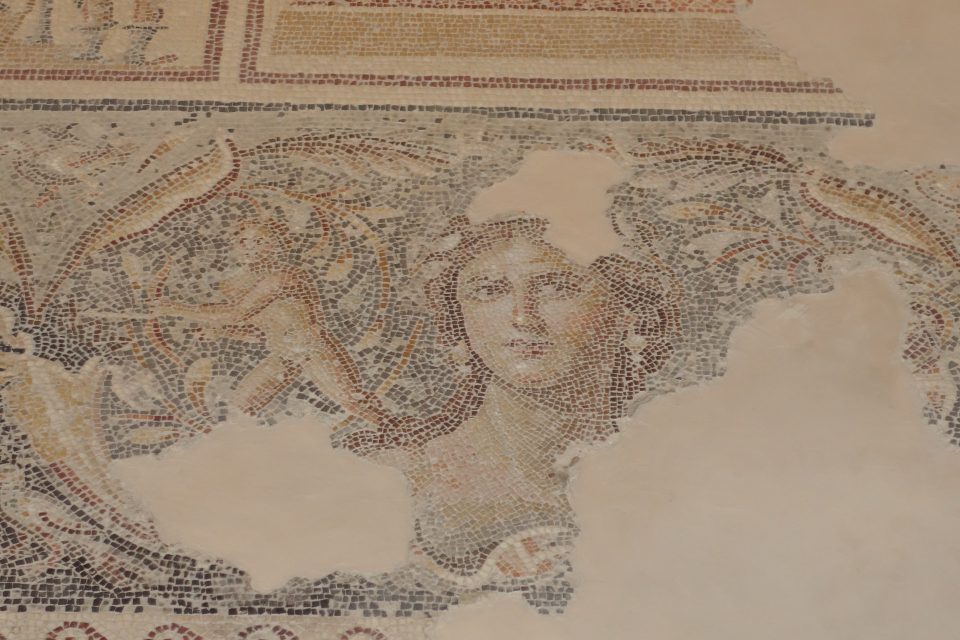MAY 27, 2020 – After some very hot days last week (our car said it was 45 degrees Celsius outside temperature on the way to grocery store last Wednesday – that is 113 Fahrenheit), it finally cooled off and we could resume our weekly trips. Yesterday we went north to Zippori National Park. We had been there many, many years ago and remembered there was a building that you go inside to see a beautiful mosaic. What we saw yesterday was so much more than that. Zippori was full of surprises.
In these days of corona, to go to a National Park you must first reserve a time slot and buy your tickets on-line. We made reservations for the 11:00 – 14:00 time slot. Before we left, I was wondering if I should find additional places to visit in the area if there was not enough to do there. We ended up staying in Zippori five hours (there were only a handful of other families in the park, and in reality you could stay as long as you want), and enjoyed the many new features the park now offers.
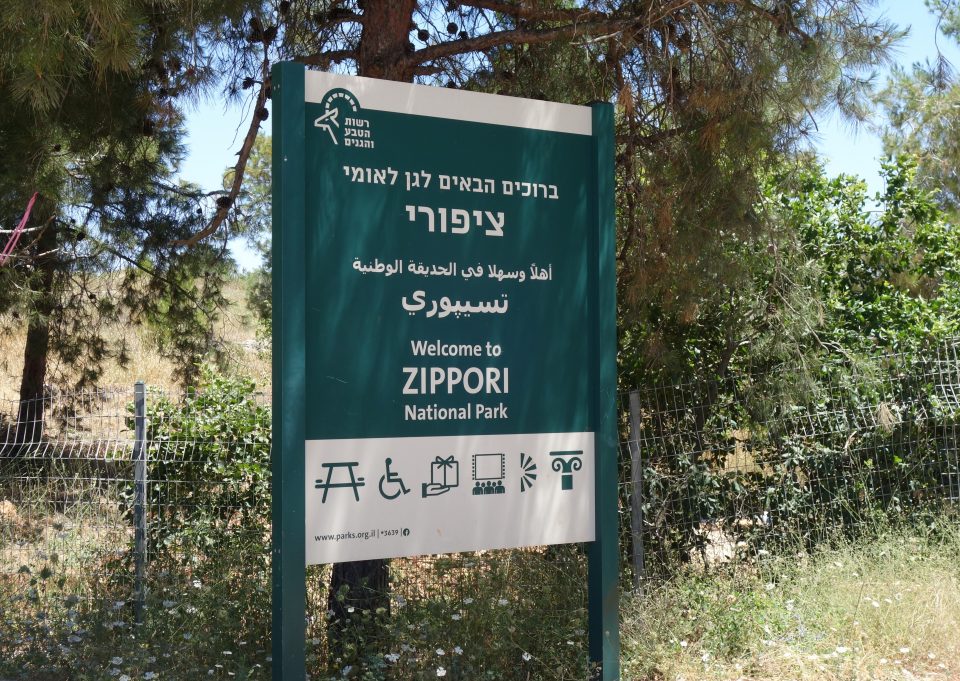
Upon arriving at the park, they take your temperature, ensure you have a face mask, give you an information booklet and tell you to drive one kilometer up the road to the main parking lot. When you get to the parking lot (it’s a beautiful short ride on a ridge of a hill, with large valleys on both sides, and to your left are views of Nazarath and Nazrat Ilit), you open the booklet to discover that the first stops on the suggested circuit were right by the entrance booth. We decided to leave those for the end, on our way out, and continue now from the parking lot. Turns out, what we saw when we returned to the entrance, was our favorite – and a great way to end the day. More about that later.
Next to the main parking lot, is a small building where we began the tour with an 8-minute introductory video (available in Hebrew, English and German) about the history of Zippori. In short, Zippori was a mixed city where Jews and non-Jews lived side by side. It was a city of aristocrats and wealthy homes. The city did not join the revolt against the Romans in 66 CE and was therefore not destroyed in the war. After the Bar Kochva revolt in 135 CE, many Jews found refuge in Zippori and it became a center of Jewish learning and the new home of the Sannhedrin – the highest Jewish court. Its most famous resident was Yehudah HaNasi – who compiled the six-book commentary on the Torah – the Mishna – in Zippori.
Having seen the video and learned the history, we were now ready to explore. In the distance there is a hill with a small fortress. Below the hill, between the fortress and the parking lot, is a large area of excavations. You walk through the excavation on what was once a main street. What we found surprising, is the many mosaics that appear everywhere. Lined along the ancient road we were walking on, are the relics of many different geometric mosaic designs – once floors and sidewalks of a wealthy city.
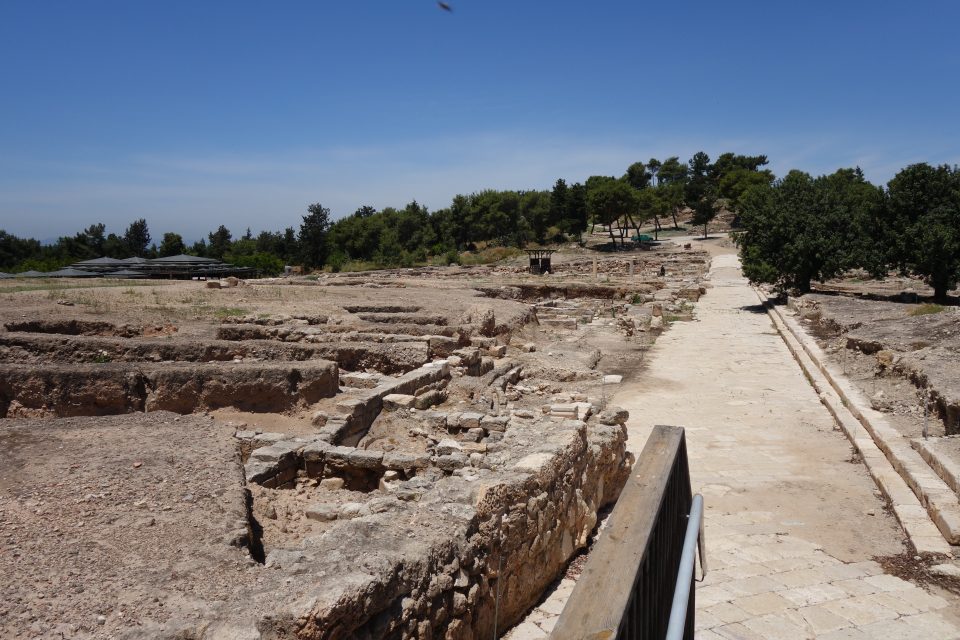
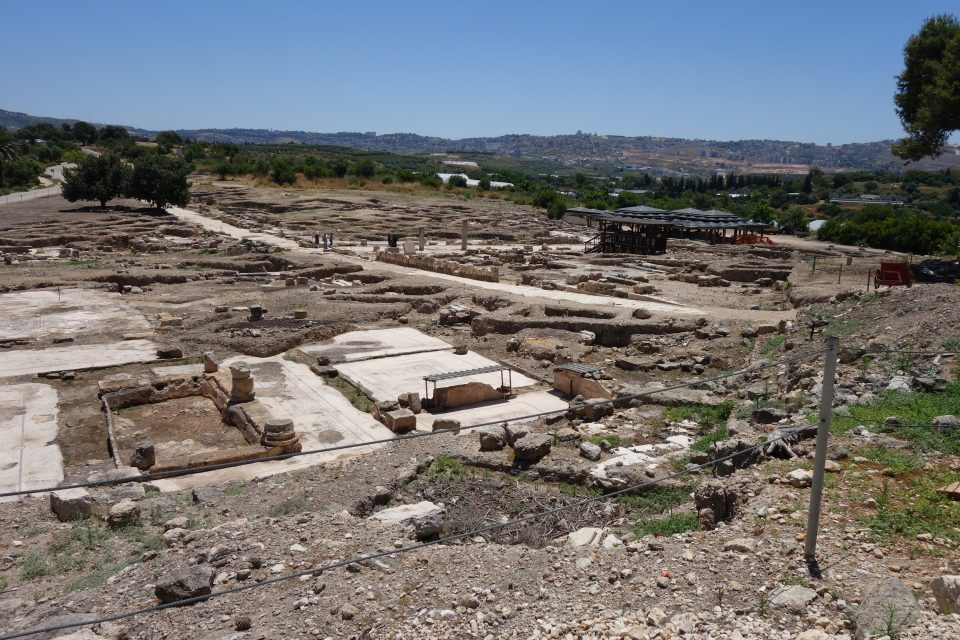
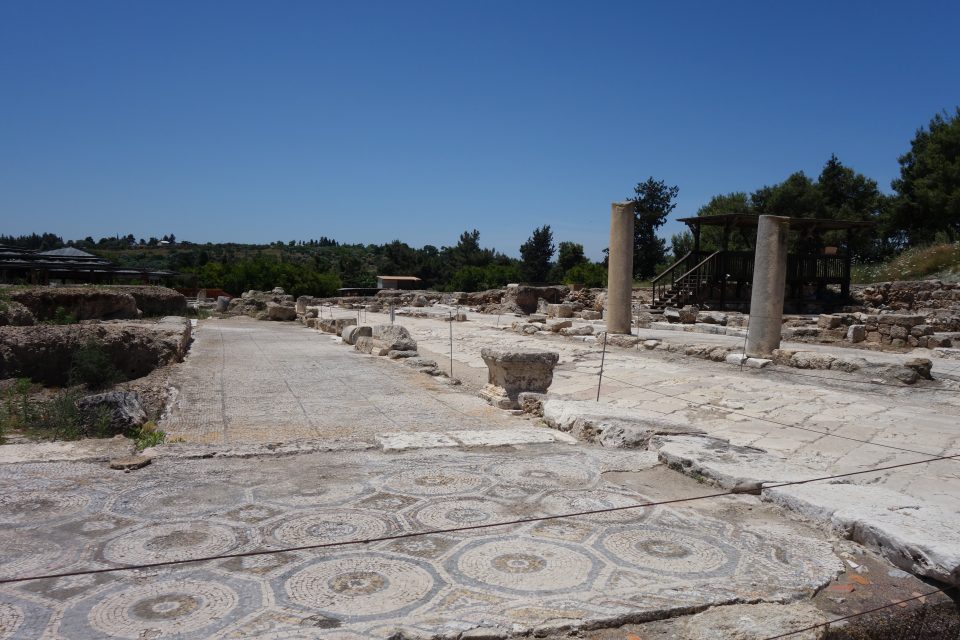

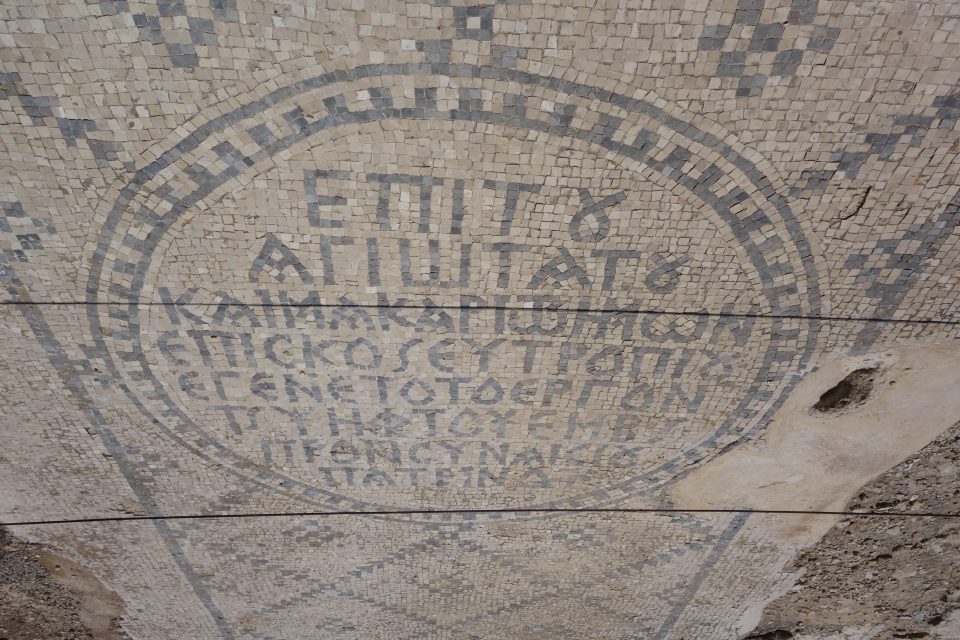
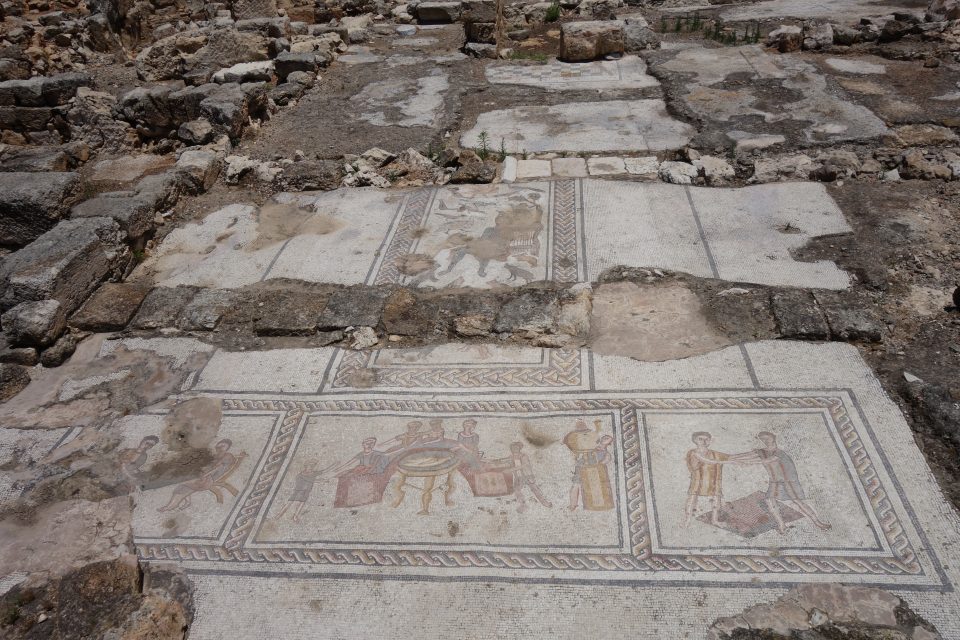
Off to the side, what was once a public building, is now know as the Nile House. The remains of this building are now protected by a roof covering, and hold a large restored mosaic showing the annual Egyptian festival when the Nile overflows, as well as many hunting scenes. Throughout the large house are many additional mosaics, some with geometrical designs and some with artwork.
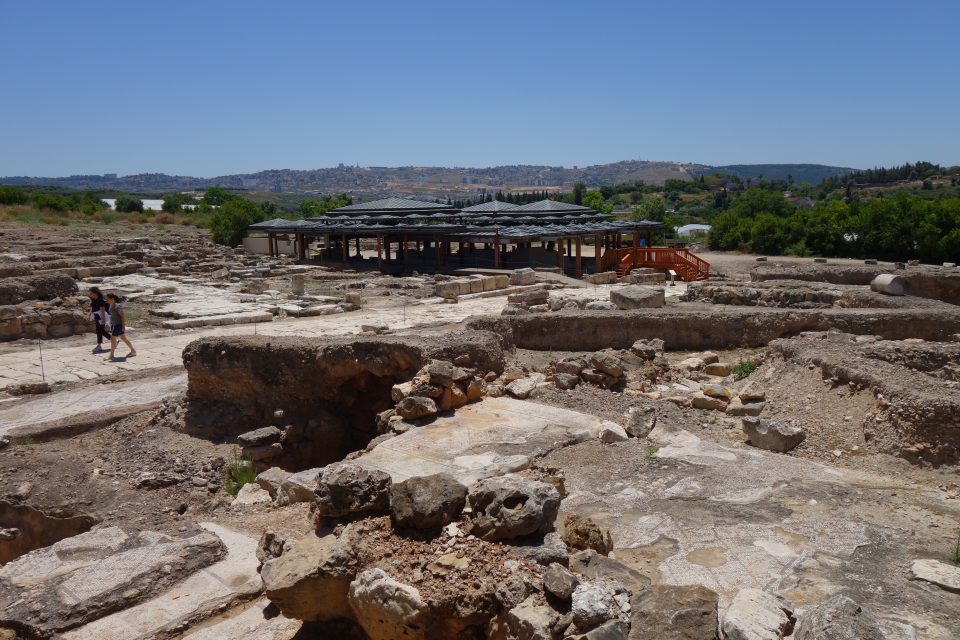
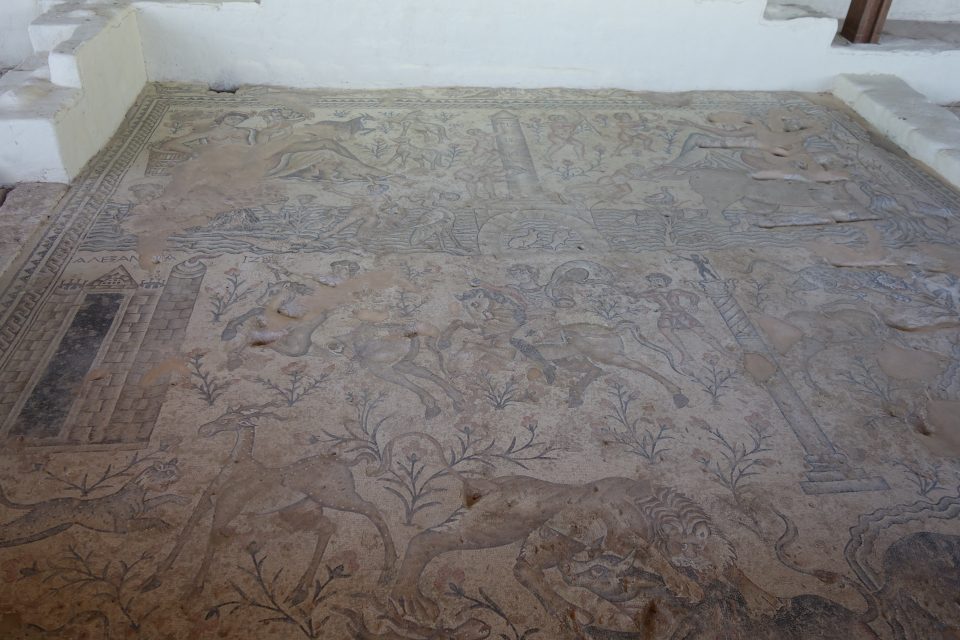
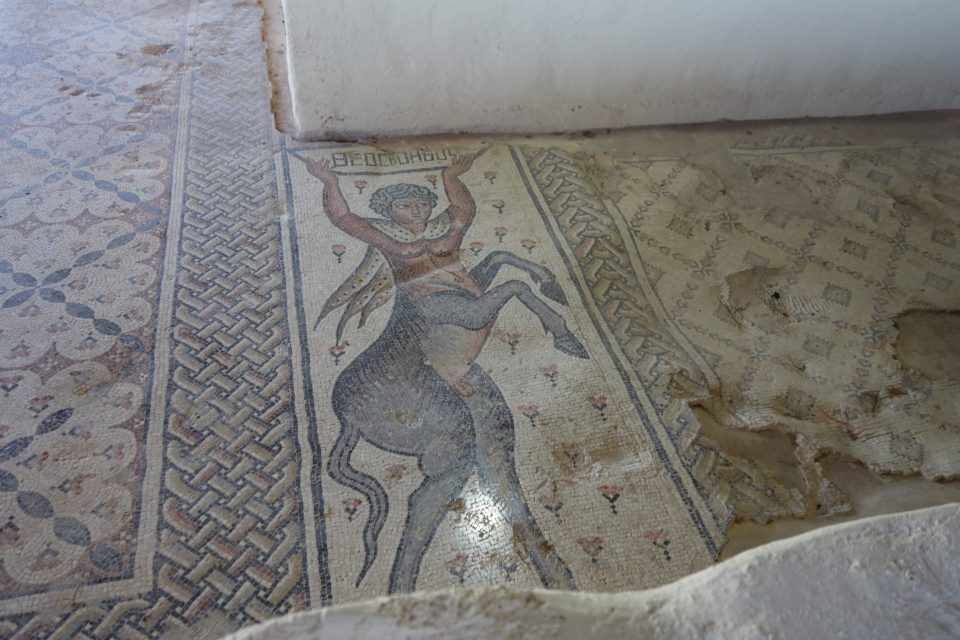
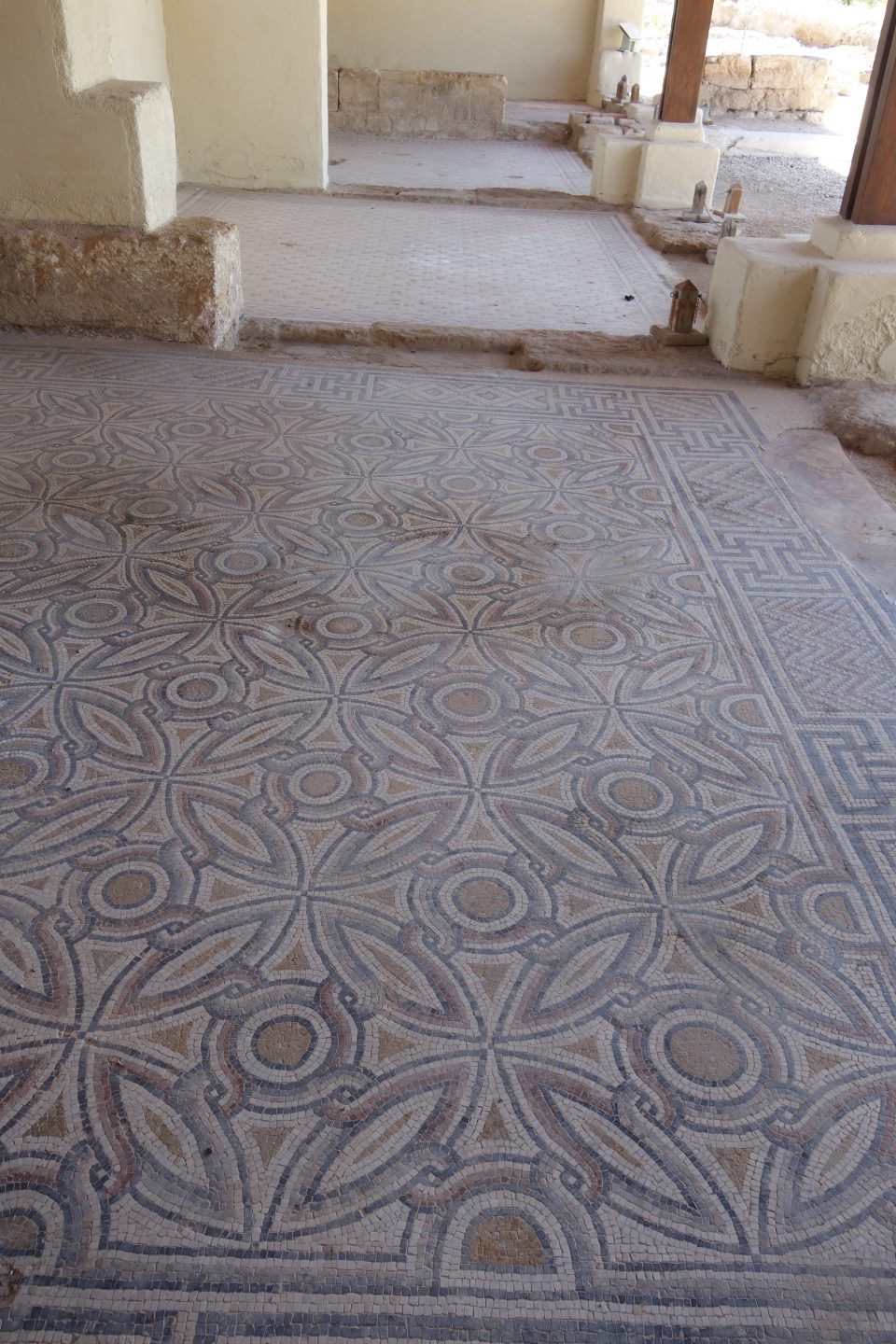
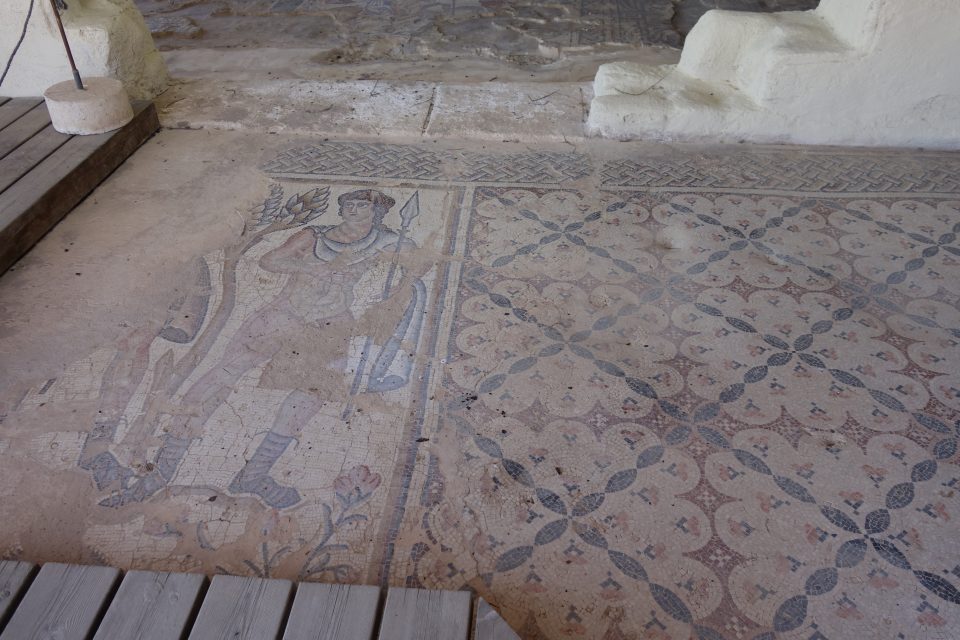
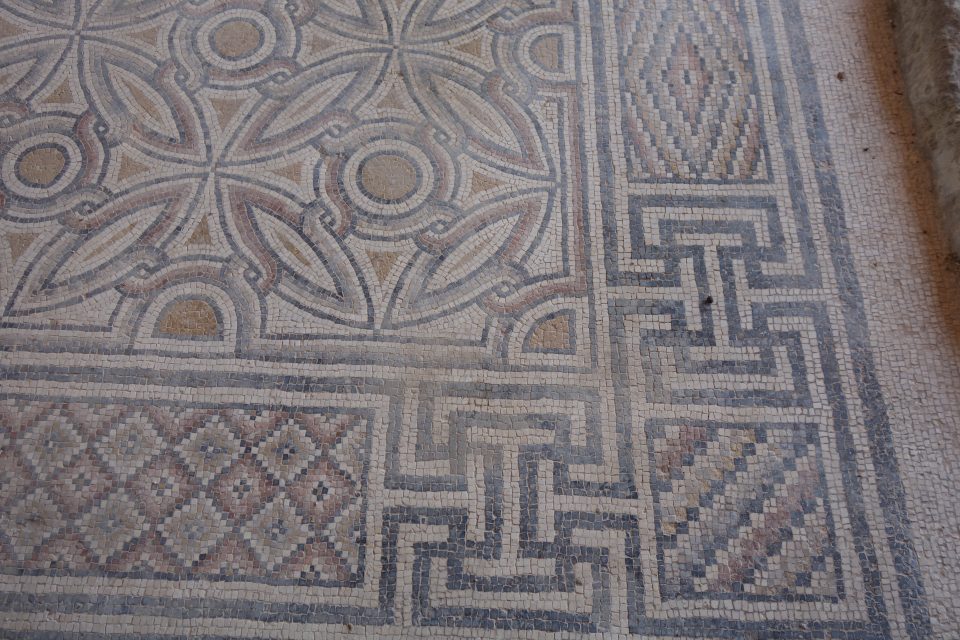
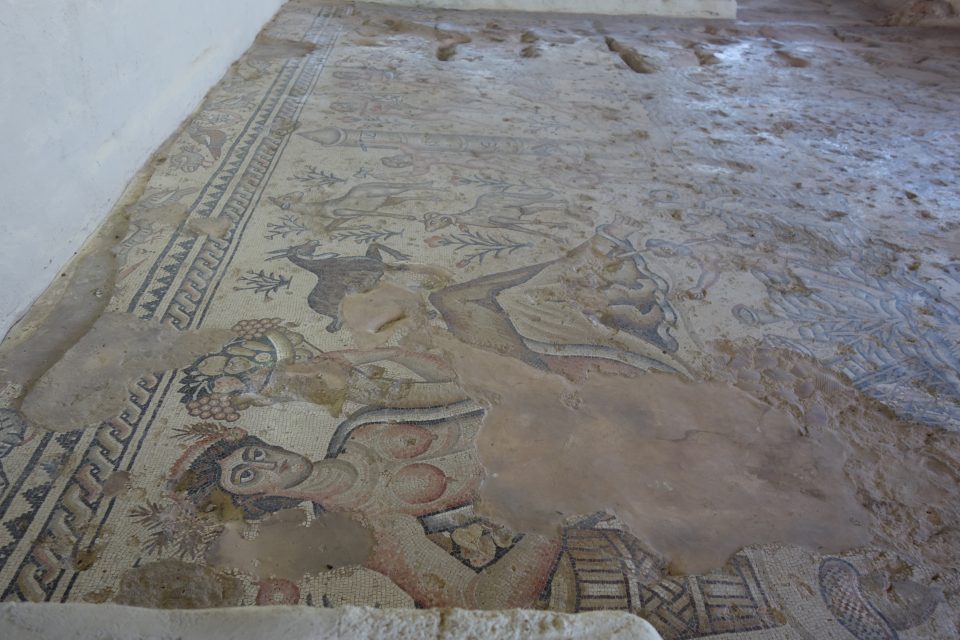

From there we followed the path and stairs up to the top of the hill. The next stop was the Dionysus house. Why Dionysus? Dionysus was the Greek god of wine. In this mansion, in what was probably the dining room, is a large mosaic that includes many references to wine harvesting, wine making and wine drinking. Part of this large mosaic is known as the Mona Lisa of the Galilee – a mosaic picture of an unforgettable beautiful woman. This was the Zippori we remembered from previous trips.

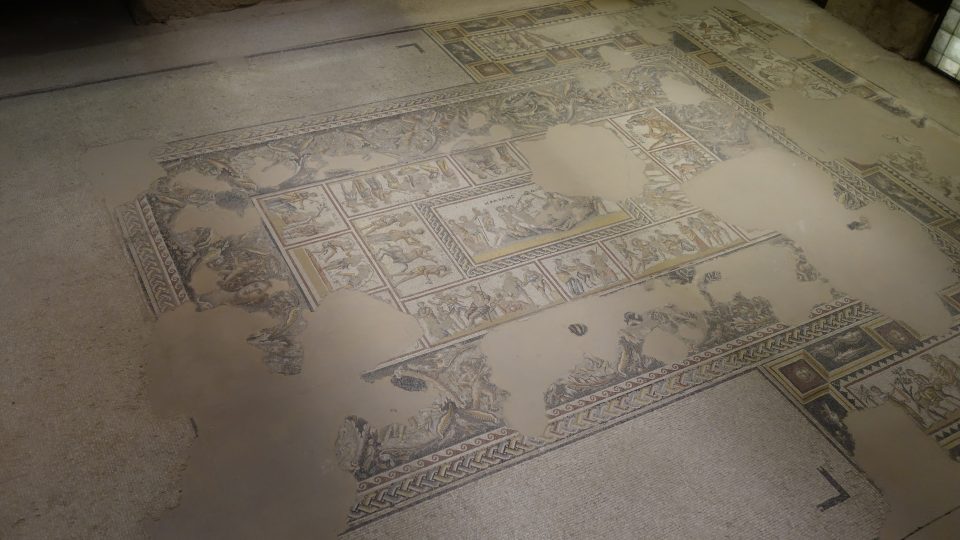
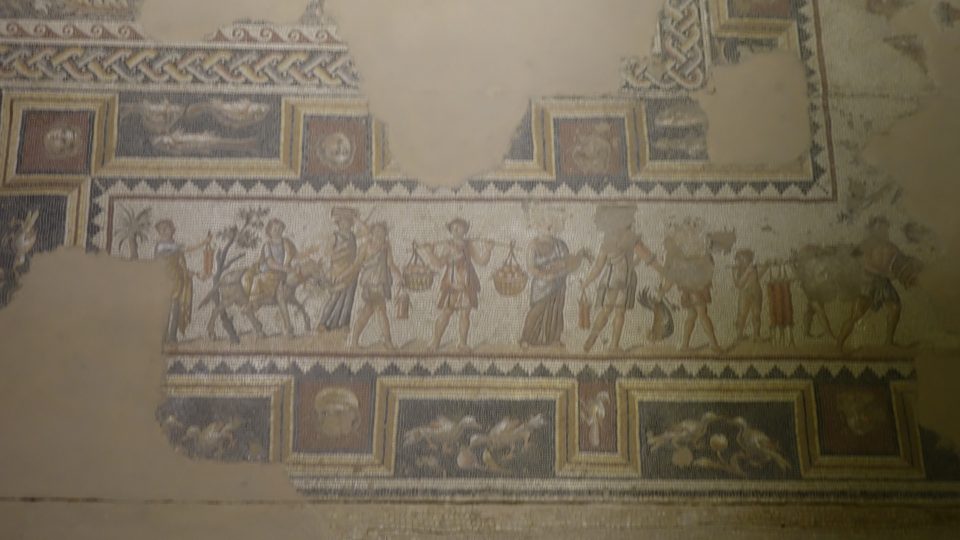
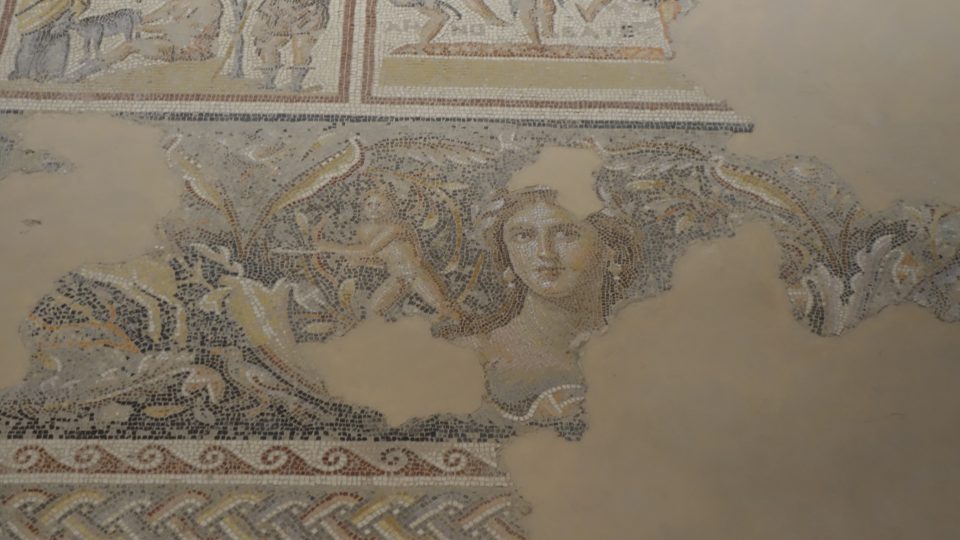
From there we went to the nearby Crusader fortress or citadel as it is called. Here we got our next surprise. Inside the citadel is now a small theater with the start of a three part audiovisual experience. The first part, on the entrance level, is a movie about a family living in the time of Yehuda HaNasi. They are arguing over dinner whether Yehuda HaNasi, in compiling the Mishna, the collection of Jewish oral traditions, is doing something good or something wrong. Some people lauded him for his efforts while others felt that in deciding which of the thousands of items to include in the Mishna, and which to exclude, he was acting with too much authority. Part two of the experience continued upstairs. Here was a long table with buttons, with a video at its head. In the video, you heard discussions of typical subjects in the Mishna. For example, two people are walking in the desert with only enough water for one person. If they share it, both will die. Should they share the water, or should only one of them drink it? In the video, one person gives an arguement why they should share, and the other why only one should drink. Then, using the buttons on the long table, the audience is invited to vote their opinion. After 20 seconds, and all the votes are tallied, the answer according to the Mishna is given. No spoilers here. To find out what the Mishna says, you need to go to Zippori. Or study the Mishna.
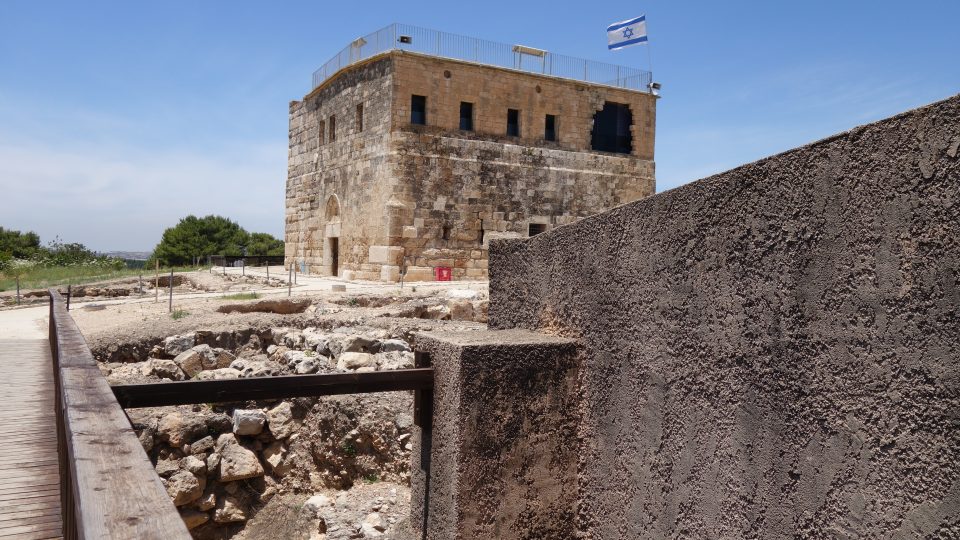
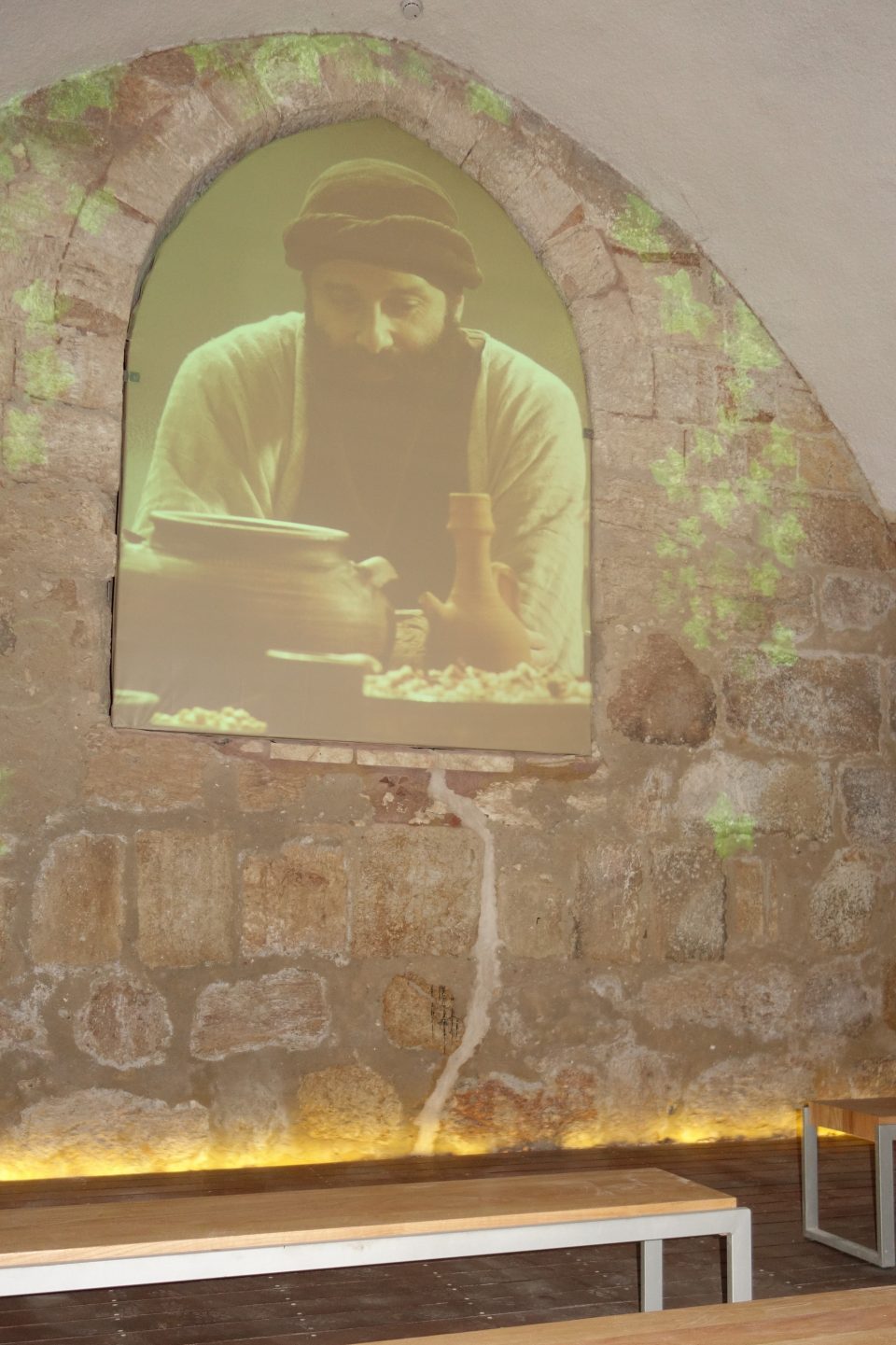
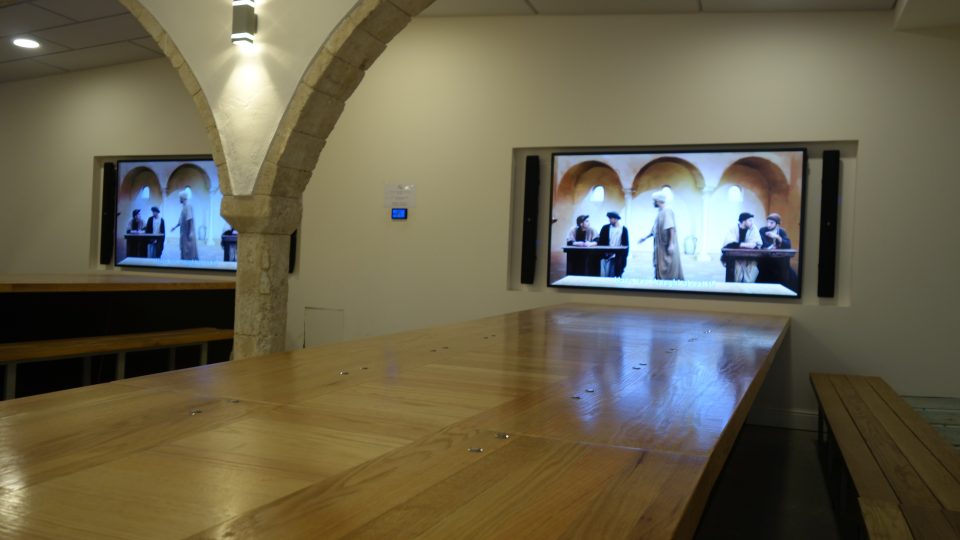
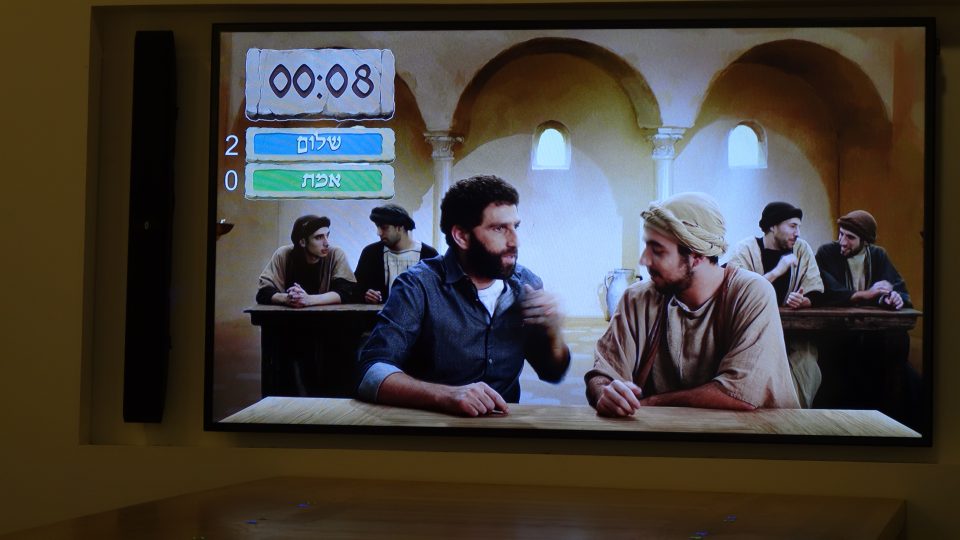
From here, you continue up the stairs to the roof of the citadel for a beautiful 360 degree view of the surrounding area. The name Zippori, comes from the work Zippor – a bird. Up here, you really get a bird’s-eye view of the landscape.


Once back on the ground, we walked through some crusader ruins to a shady spot for a snack. In general, in Zippori the shady parts are few and far apart – not recommended to visit in the summer. Wait for the colder months.
We continued along the path to the theater. The theater is a half circle that once held about 4500 stone seats facing a main stage.

The next stop was the synagogue. It’s off to the side and not easy to find – but worth looking for. Here was the third part of the audiovisual experience. It told the tale of the death of Yehuda HaNasi. An interesting story. The mosaic floor of the synagogue has been restored and it is amazing – including Aramaic letters, two menorahs, references to the story of the sacrifice of Itzhak, a Shavout Bekorim basket and more symbols of the Jewish tradition. In the middle is a zodiac illustration with the 12 months of the Hebrew calendar. According to ancient sources, there were many synagogues in Zippori, but this is the only one found so far.
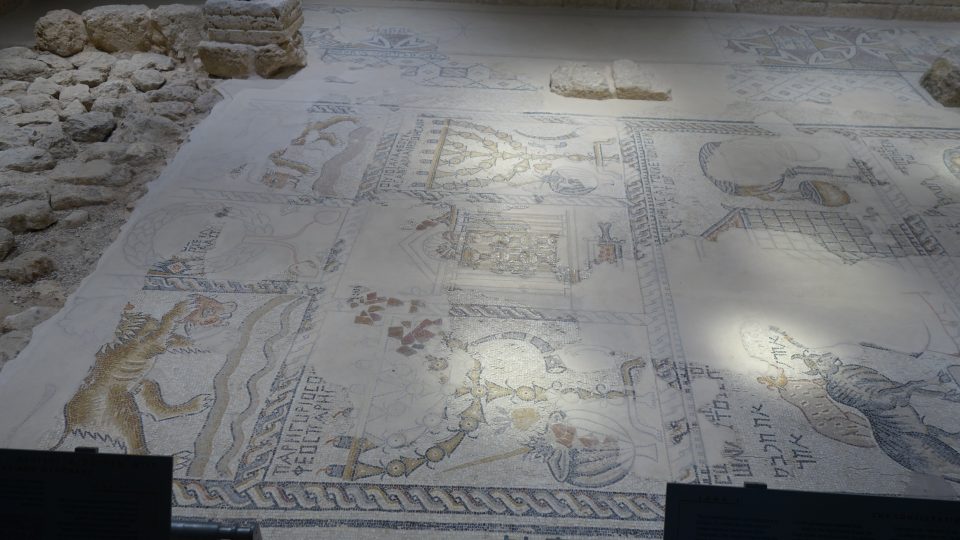
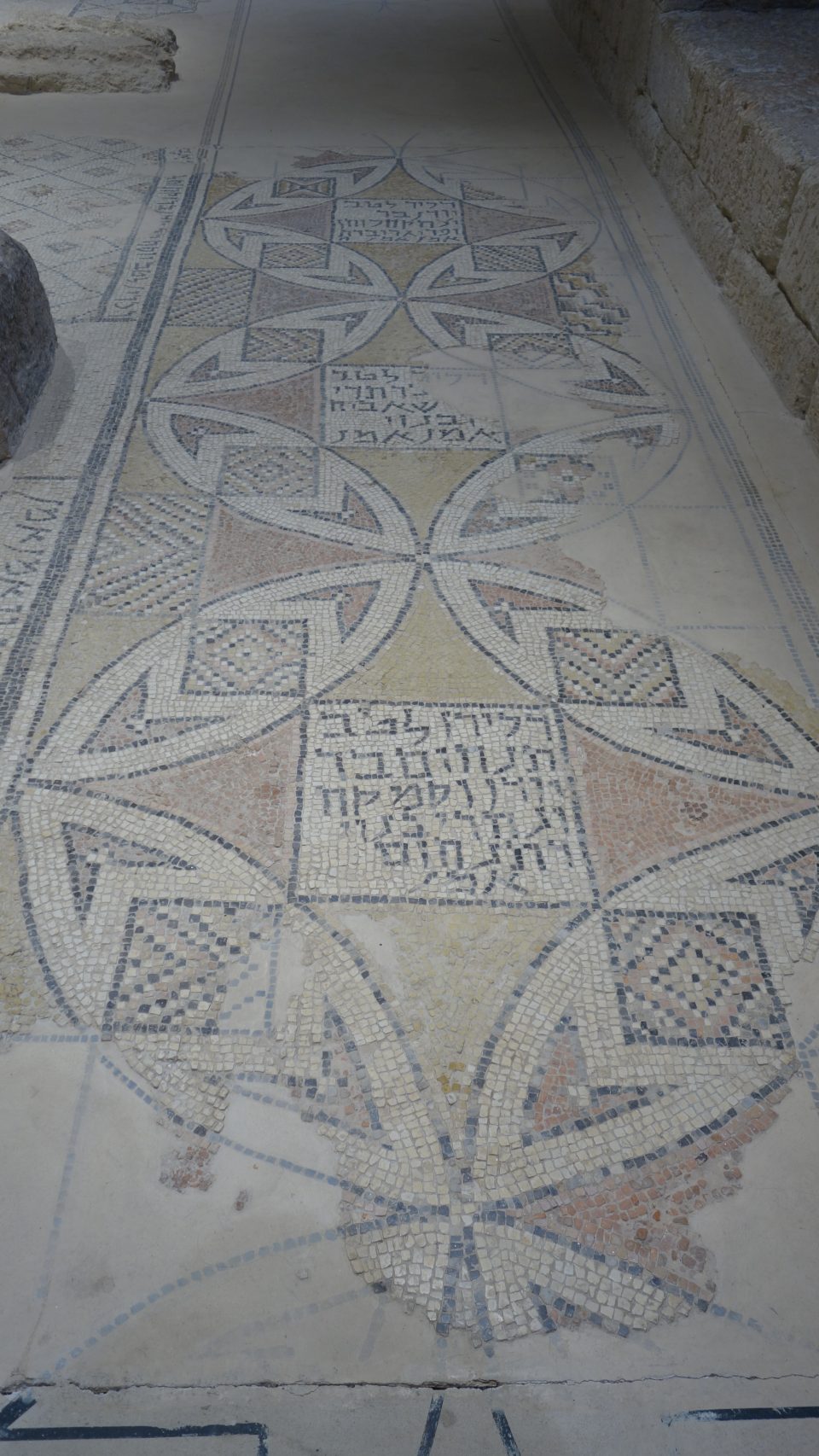

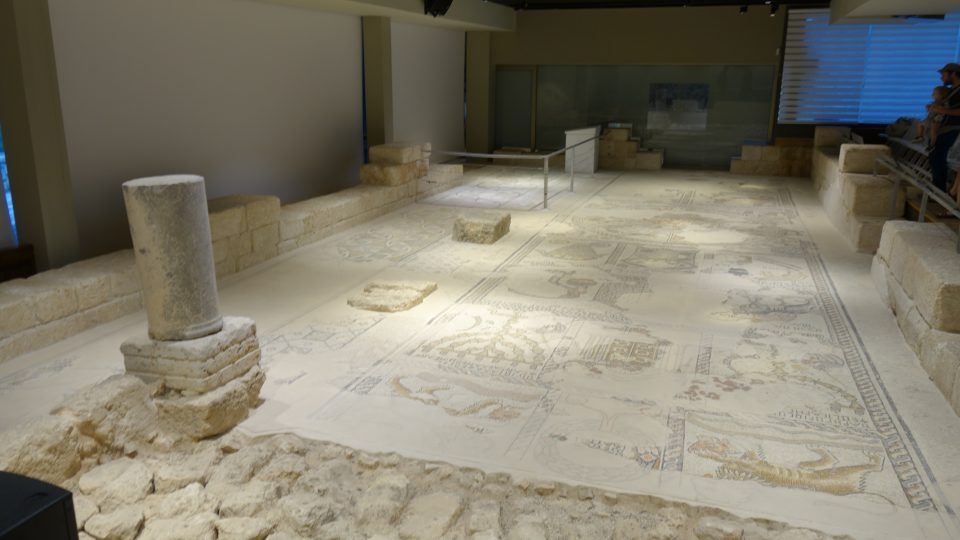
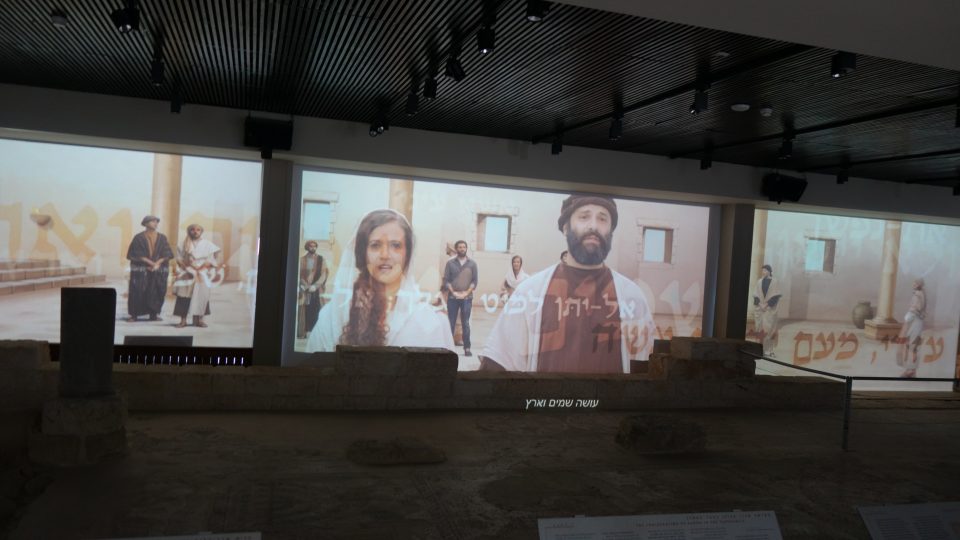
From the synagogue, we returned to the main parking lot and had a picnic lunch at one of the many available picnic tables. While eating we had a glorious view overlooking the Bet Netofa valley and the settlement of Hoshaya.
In the introductory video, we had learned about the advanced system that brought water to Zippori. Now, after lunch, it was time to take a look. First, near the main parking area, is the Mashad Pool. Basically a large hole in the ground that was a reservoir in the system. We got into our car and drove to the parking lot near the entrance booth, to see more of the water system. It was a wonderful surprise to learn that some underground parts are open to the public and we could climb down into the subterranean reservoirs. These were huge chambers that held the water that came from springs many kilometres away. It was spectacular.
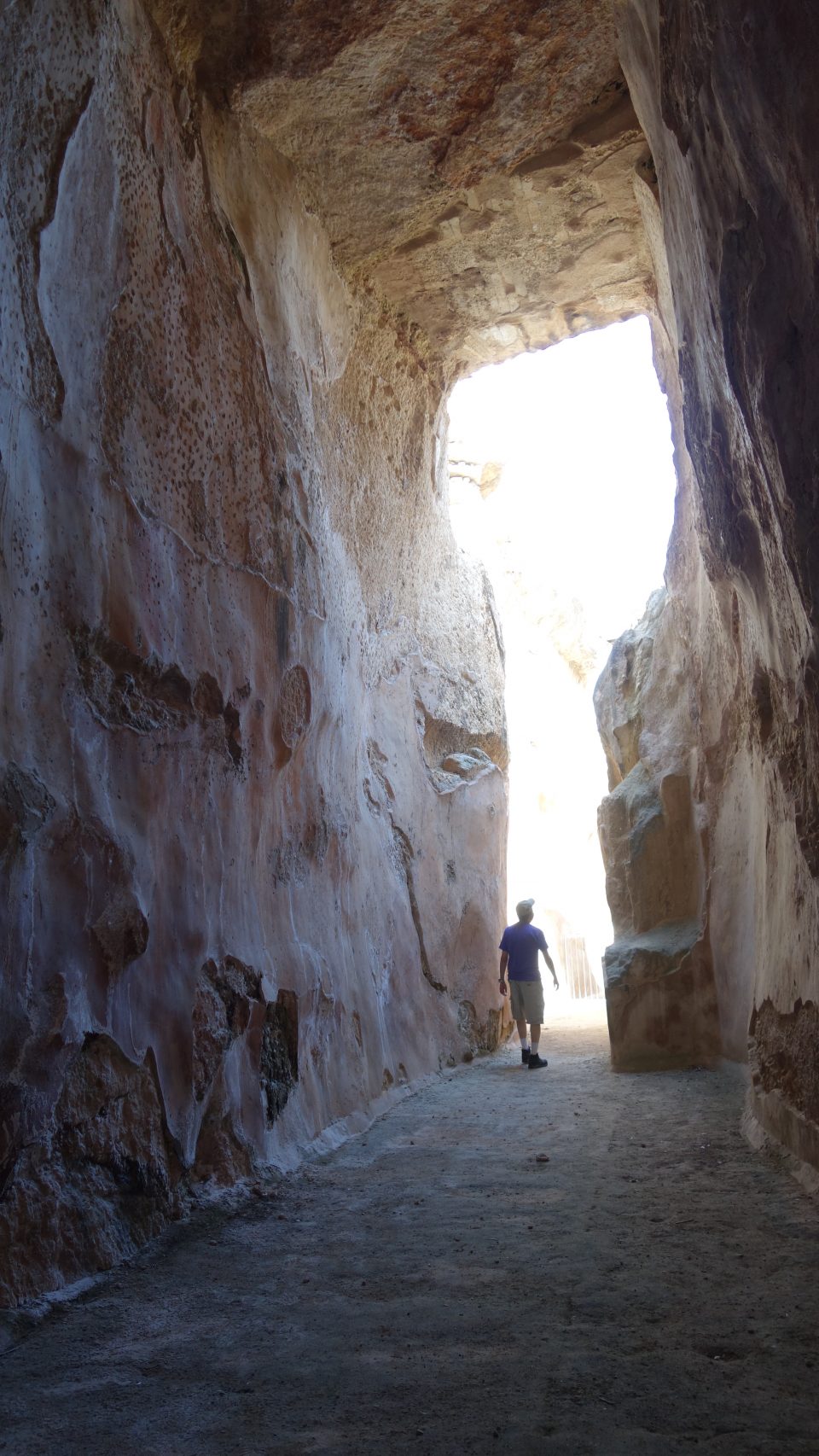
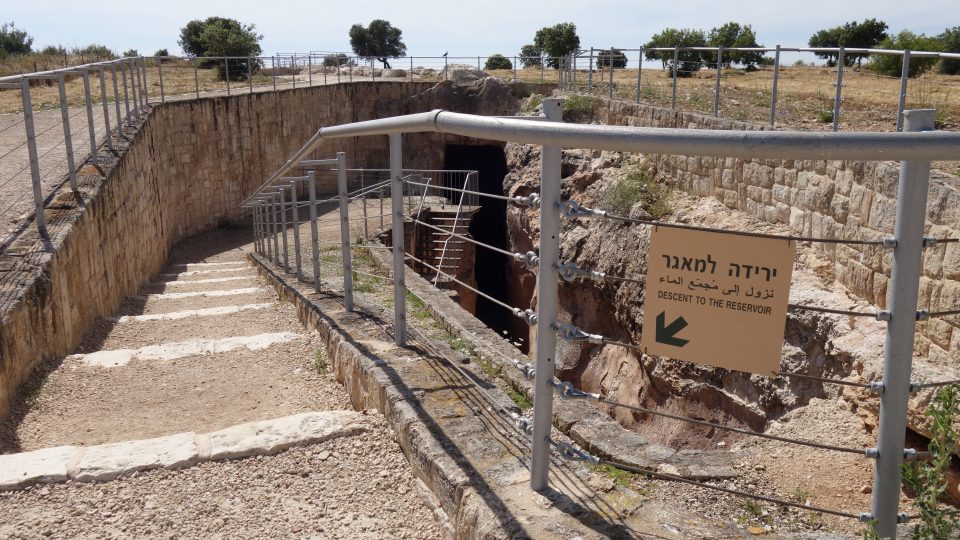
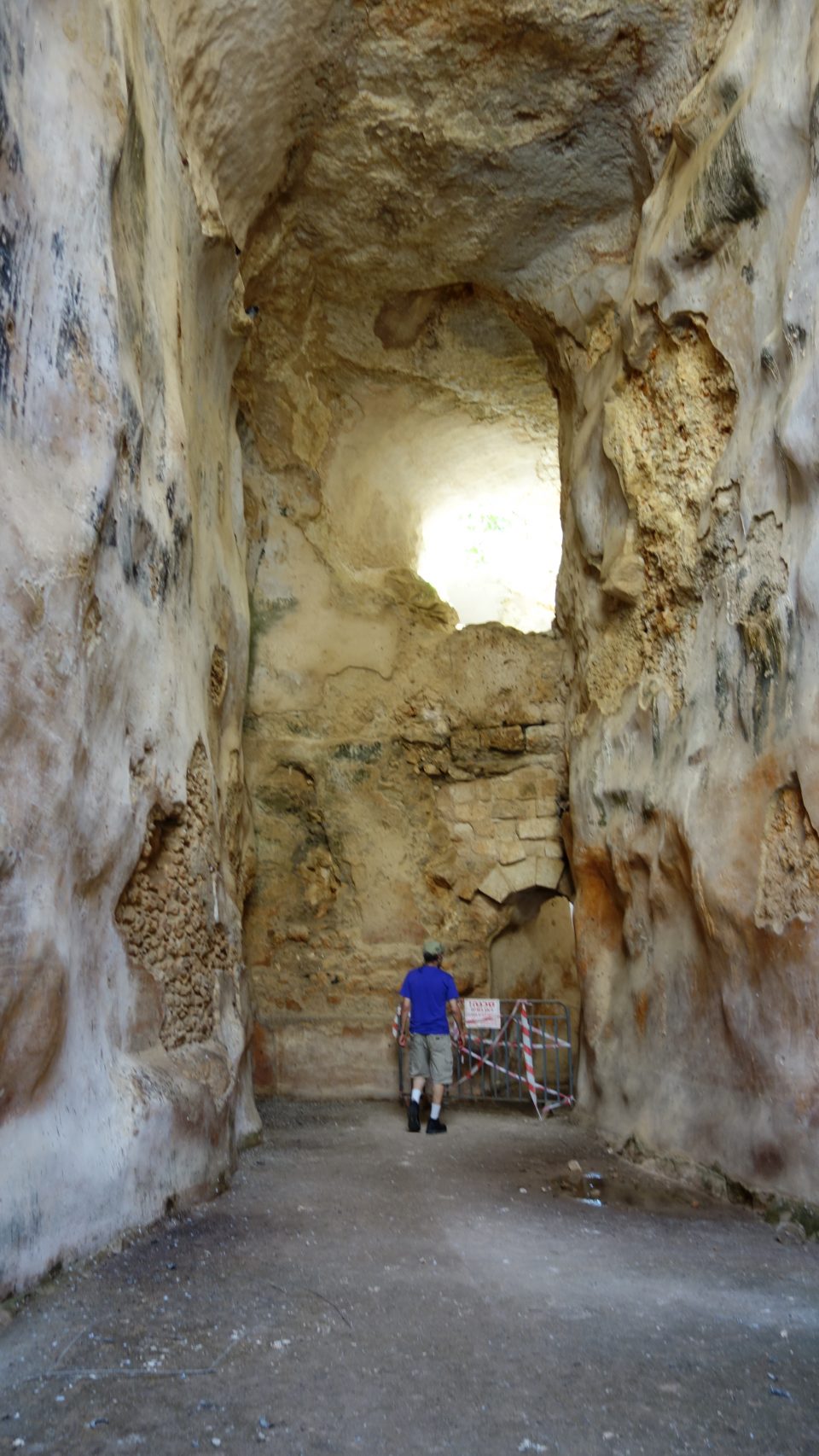
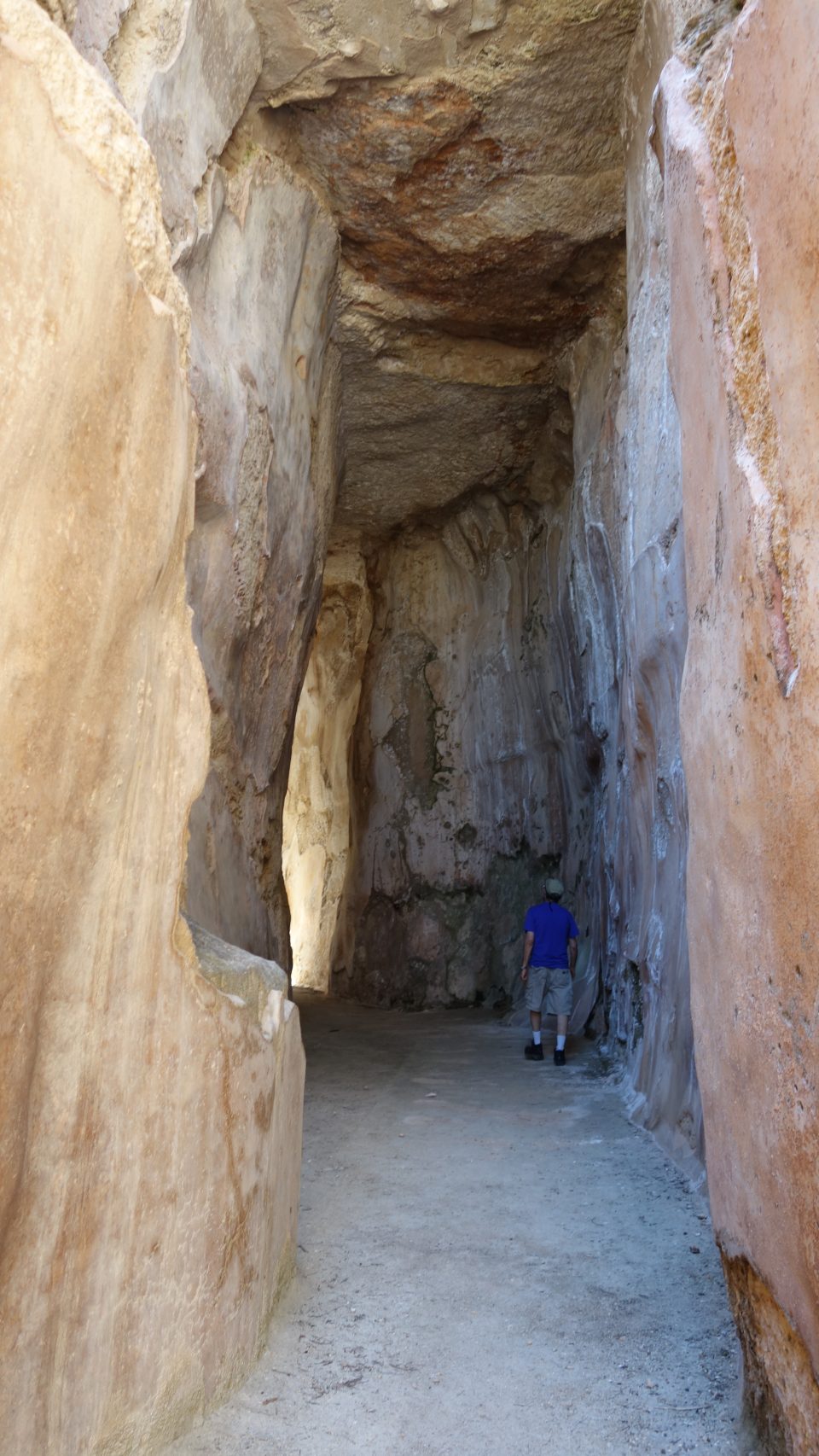
From the reservoirs, we followed the signage to the Six Shaft Tunnel. Like in the name, this is a series of six shafts that were used for the construction workers to descend underground to work on the water system. You were allowed to enter the tunnel at Shaft 4 where you go down a steep staircase, and then make your way in the pitch black to exit at Shaft 6 – about a 90 meter distance. You must use flashlights and you need to watch your head for low sections – as the bump on my forehead testifies.
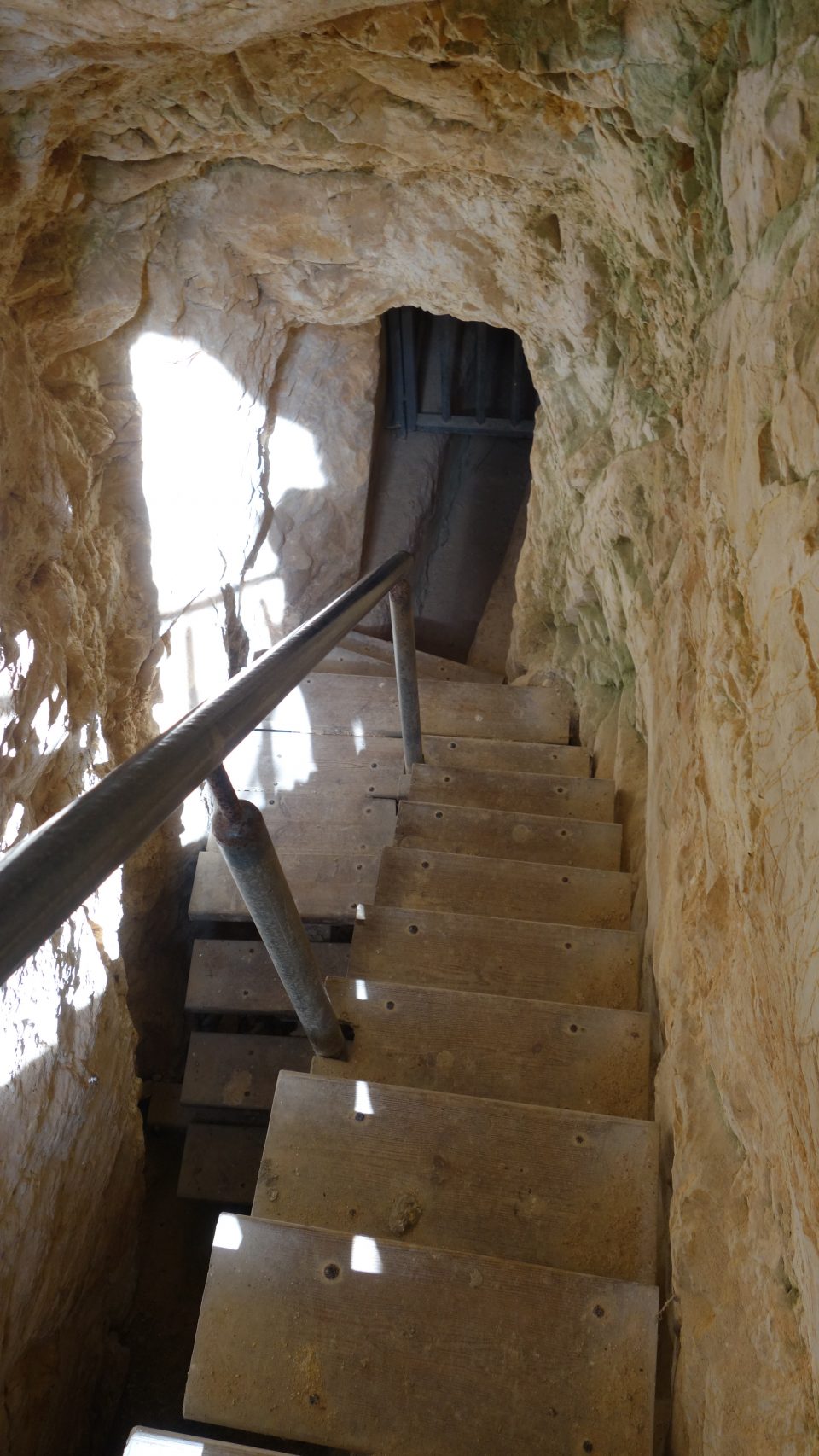
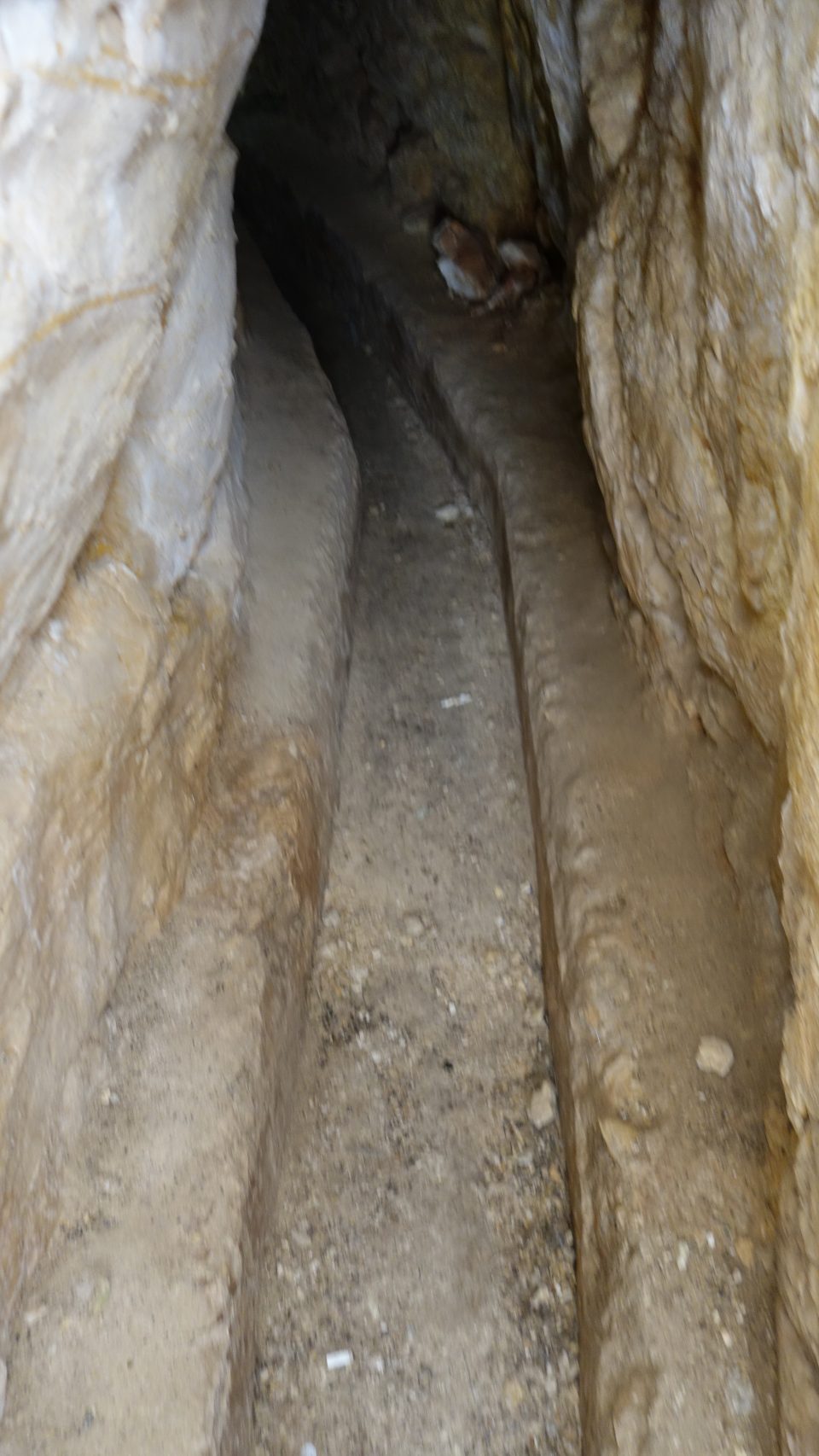
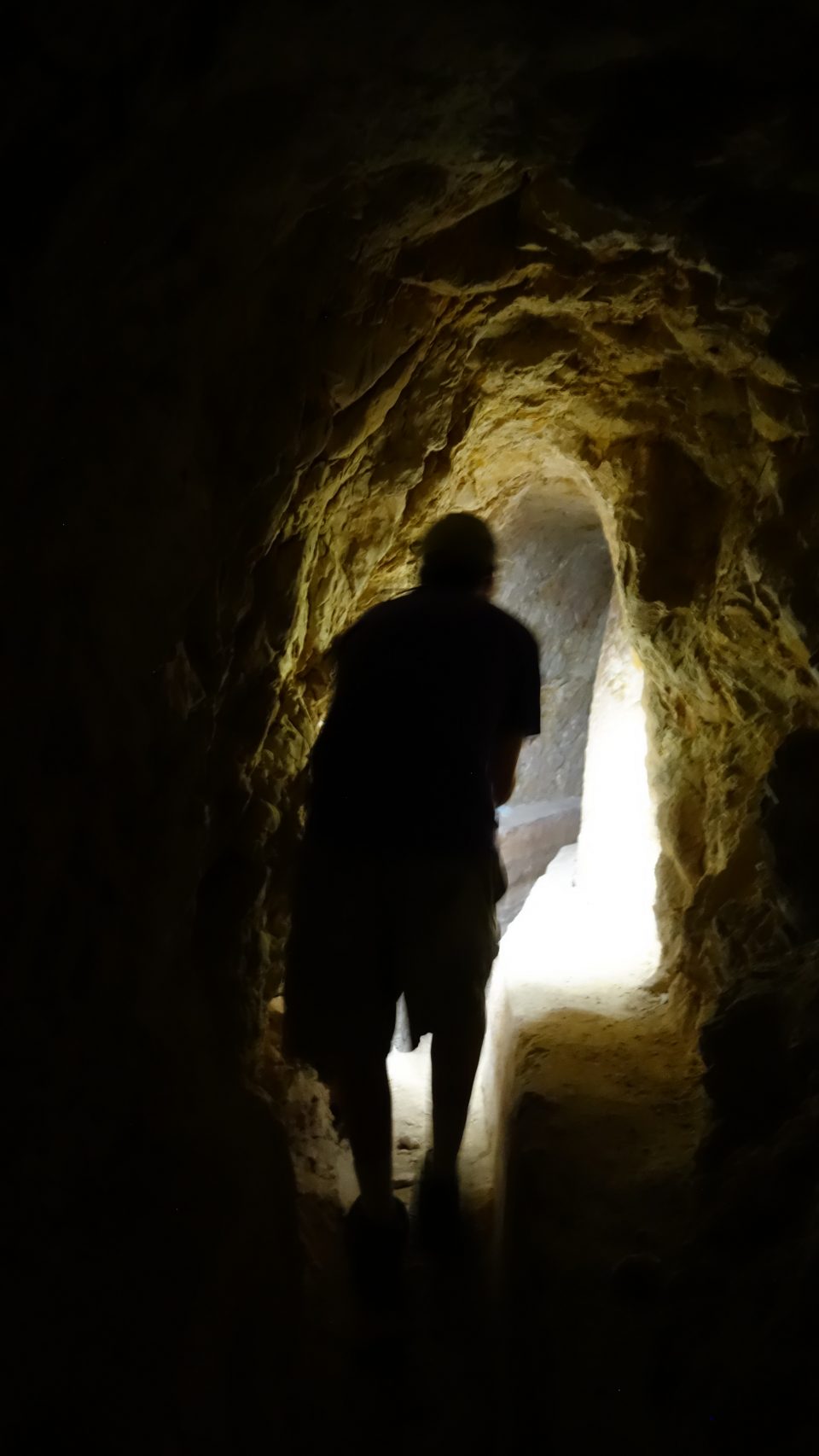
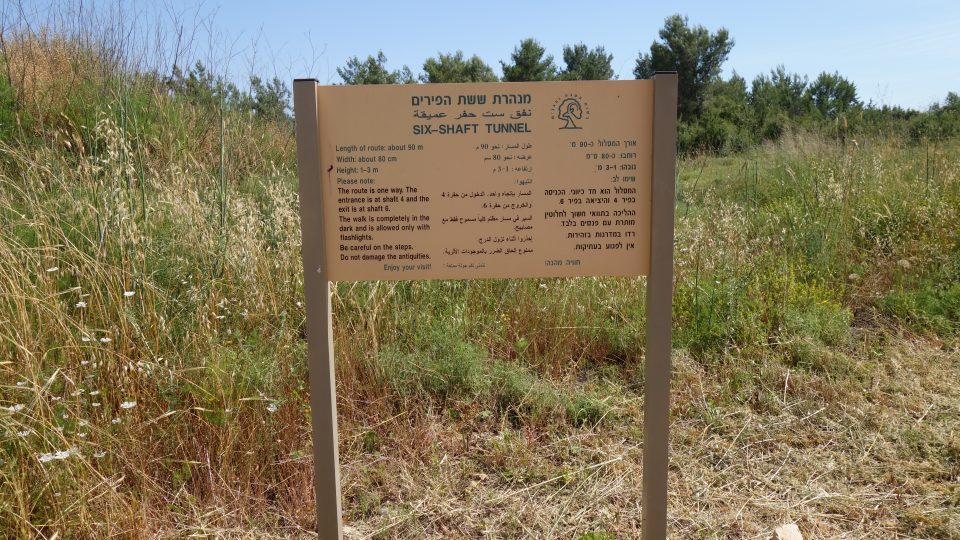
Once back above ground, you see the remains of the aqueduct that continued to carry the water into the city.
All in all, a very educational day – full of nice surprises that kept us interested and busy.
